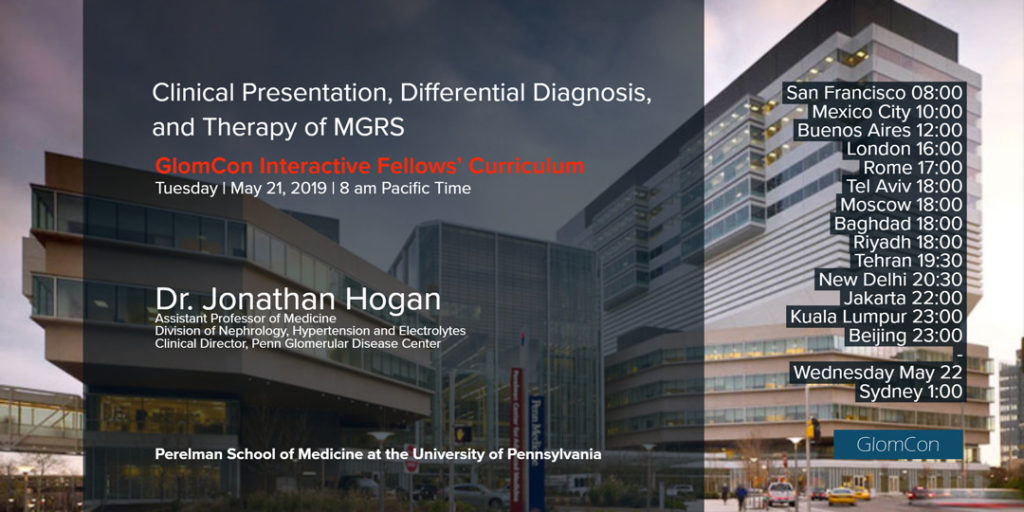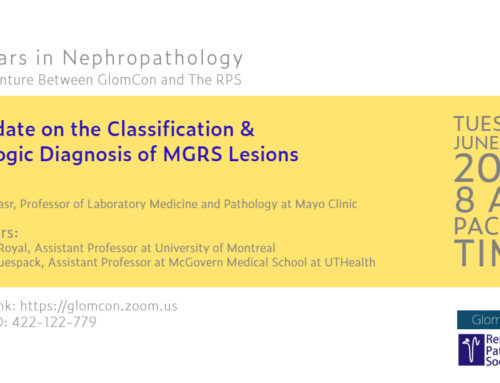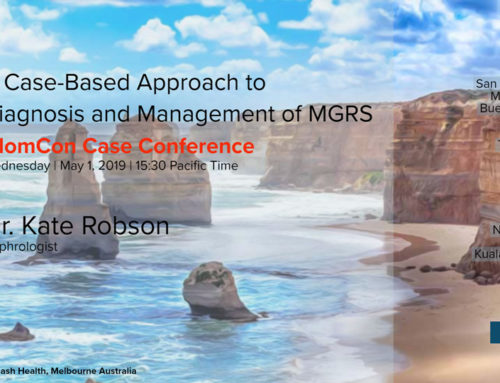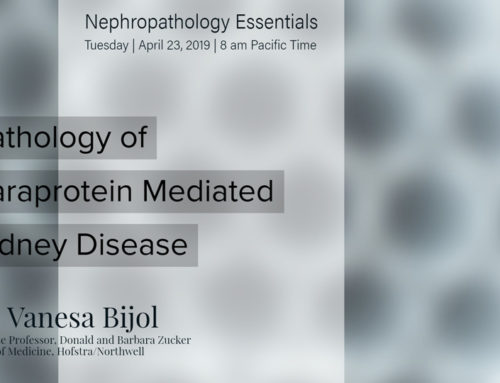GLOMERULAR DISEASE MANAGEMENT
Monoclonal Gammopathy of Renal Significance
In this GlomCon Conference, Dr. Jonathan Hogan discussed the diagnosis and treatment of Monoclonal Gammopathy of Renal Significance. This summary does not do justice to his detailed presentation and interactive discussion. Nevertheless, please find our Moderator’s Notes below, based on his live presentation.


By Dr. Jessica Lapasia
Nephrologist
The Permanente Medical Group
Key points:
Definitions:
• Paraprotein: A monoclonal heavy chain, light chain, or heavy chain+light chain (e.g. intact immunoglobulin) present in the blood or urine produced by clonal B-cell or plasma cell populations (non-malignant, premalignant, or malignant).
• If renal involvement is present, but the clone is not malignant (does not meet criteria for cancer, such as smoldering myeloma, multiple myeloma or lymphoma), it is termed Monoclonal Gammopathy of Renal Significance (MGRS).
Diagnosis:
• There are three key diagnostic lab tests:
o Serum and urine protein electrophoresis (SPEP and UPEP)
o Serum and urine immunofixation (IFE)
o Serum free light chain assay: kappa and lambda light chains (urine free light chain assay is not recommended due to lack of specificity)
• Bone marrow biopsy is critical – it is important to look for a clone and identify it if possible, as this will guide treatment.
• Flow cytometry of bone marrow aspirate and of serum should evaluate both plasma cell and B-cell specific antigens.
• PET scan may be indicated if lymphoma is suspected.
• The clonal cell burden is not necessarily proportional to the degree of renal involvement. Even a small clone can cause severe disease.
• The type of paraprotein can be a clue to the type of clone:
o IgM is typically produced by CD20-positive B-cells
o IgG and IgA can be produced by B-cells or plasma cells
• Patients are treated in collaboration with hematology – it is important to monitor both hematologic response and renal response.
o Renal response: serum creatinine, proteinuria, hematuria
o Hematologic response: serum kappa/lambda, SPEP + IFE, UPEP + IFE, bone marrow biopsy (repeat if needed)
• In cases of proliferative GN with monoclonal immunoglobulin disease (PGNMID), a circulating monoclonal paraprotein is detected in only 36-43% of cases, and in only 25-42% cases the underlying clone can be identified. In cases where a hematologic response cannot be assessed, we are left with following renal response alone.
• Patients with C3 glomerulopathy may have associated monoclonal IgG; In one series, 38% of patients diagnosed with C3G were found to have a monoclonal IgG. The prevalence increased up to 65% in patients over 50y. (reference #4)
• Targeted therapy for an identified B-cell clone in patients with C3G+monoclonal IgG has shown improved renal outcomes compared with conservative therapy/immunosuppression. (reference #5)
Therapy:
• Consensus is that outcomes are improved if clone is detected, and clone-directed therapy given.
• Possible treatment combinations include: Rituximab-cyclosphosphamide-prednisone; Cyclophosphamide-bortezomib-dexamethasone; bendamustine-ofatumumab-dexamethasone (amongst others).
• If no clone is detected and patients are given empiric therapy in collaboration with hematology (directed against B-cells + plasma cells), a significant proportion (30% in one series) can still have clinical response.
Selected References:



